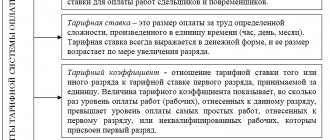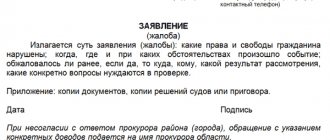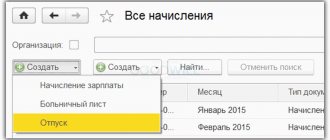Elena Demakova
Updated: 2020.09.03
34845
0
Font
A.A.
No time to read?
According to official statistics, the average salary of teachers in Russia is 38,419 rubles. However, the experts themselves say that their incomes rarely exceed the 20 thousand rubles level. According to a survey by the All-Russian Popular Front (ONF), a third of teachers do not know what their salary consists of. Our editors conducted a study and found out what teachers’ salaries consist of and whether there will be an increase in 2020.
What are the features of a teacher’s job in terms of salary?
Statistics across the country show that the average teacher salary in Russia at the end of 2020 is 45,608 rubles. In this case, the minimum is 11,000, and the maximum (for example, in Chukotka) exceeds 90,000 rubles.
Remuneration in this area should take into account the following:
- The amount of work done to educate children.
- The qualifications of a teacher, achieved through education, many years of work and talent.
- Progress achieved in the education and upbringing of children. Here we mean not only grades at school, but also the attitude of parents towards them, success in various competitions and olympiads, adherence to discipline, manifestation of additional interest in subjects, and more.
- Features of working in more difficult conditions (teaching in a rural school, working in the Far North, working with difficult children).
- Taking into account the degree of intensity of teaching activity.
- Payment for additional types of work (class management, checking notebooks, making handouts and similar activities).
The work of teachers with schoolchildren is complex and multifaceted, involves a lot of mental and physical effort and deserves decent pay.
School teachers not only teach children, but also take part in their upbringing. Therefore, not only themselves, but the entire society is interested in ensuring that material incentives correspond to the quality and quantity of their work.
The salary of a school teacher consists of the following parts. Each of them is important for working with children. The salary amount paid includes all of the above elements.
Remuneration of teachers in accordance with the Methodological Recommendations of the Ministry of Education and Science of Russia
Currently, several remuneration systems are used to calculate remuneration for employees of general education organizations, including the “Basic salary” model, based on the base salary and increasing factors; “All inclusive”, based on the teacher's salary for 36 working hours per week; “Student-hour”, based on “student-hour”, which allows, when calculating the constant part of teachers’ salaries, to take into account the difference in the number of teaching hours taught by teachers and the number of students with whom teachers work.
However, their use, as noted in the Commentary of the All-Russian Trade Union of Education on the Methodological Recommendations for the formation of a system of remuneration for employees of general education organizations, developed by the Ministry of Education and Science of Russia (hereinafter referred to as the Methodological Recommendations), led to the destruction of the unified principles for the formation of the procedure and conditions of remuneration for a significant part of teaching staff; violation of federal legislation directly related to the remuneration of teaching staff; significant unjustified differentiation of fixed wage rates (official salaries) of workers; a significant reduction in the fixed part of its salary structure and an unreasonable increase in the variable part; the application of reduction coefficients for positions the occupation of which requires a higher education, in the event that a person who does not have a higher education is hired for such a position, etc.
Methodological recommendations for the formation of a remuneration system for employees of general education organizations were developed by the Ministry of Education and Science of Russia jointly with the All-Russian Trade Union of Education (letter dated December 29, 2020 No. VP-1992/02) in accordance with the instructions of the Government of the Russian Federation following the results of the All-Russian August meeting in 2016 and are aimed at improving the current remuneration system, which causes significant complaints from employees of educational institutions. The All-Russian Trade Union of Education has prepared a Commentary on them. As noted in the Methodological Recommendations, the improvement of remuneration systems for teaching and other employees of general education organizations is carried out in order to ensure the prestige and attractiveness of the teaching profession; ensuring equal pay for work of equal value ; preventing differences, exceptions and preferences not related to the business qualities and results of the work of employees, as well as the results of the activities of organizations. In the Methodological Recommendations, it is recommended that teachers be remunerated on the basis of wage rates , the amounts of which are established by the organization not lower than the minimum wage rates for the qualification levels of professional qualification groups (hereinafter referred to as PQG) for positions of educational workers, approved by order of the Ministry of Health and Social Development of Russia dated May 5, 2008. No. 216n, which are established by state authorities of the constituent entities of the Russian Federation and local government bodies. Note. The wage rate is a fixed amount of remuneration for an employee for performing a standard of work of a certain complexity (qualification) per unit of time, without taking into account compensation, incentives and social payments. For example, for teachers, lecturers, additional education teachers, trainers, in accordance with the order of the Ministry of Education and Science of Russia dated December 22, 2014 No. 1601, the standard hours of educational (teaching) work are set at 18 hours per week for the wage rate.
When establishing wage rates for the qualification levels of the PKG, it is recommended that government bodies of the constituent entities of the Russian Federation and local governments: - do not allow the establishment of different salary amounts (official salaries), wage rates for positions included in the same qualification level of the PKG , as well as establishing salary ranges (official salaries), wage rates for qualification levels of the PKG or for positions of employees with equal complexity of work; - do not establish for positions of employees included in the same qualification level of the PKG, different sizes of increasing coefficients for salaries (official salaries), wage rates, and also establish decreasing coefficients for positions of employees formed in the PKG of positions, the occupation of which requires the presence of higher education, if a person who does not have a higher education is hired for such a position. Note. The qualification levels of professional qualification groups of positions for education workers are established by order of the Ministry of Health and Social Development of Russia dated May 5, 2008 No. 216n. Teachers belong to the professional qualification group of teaching positions of the 4th qualification level. This also includes a teacher-librarian, teacher, teacher-organizer of life safety, head of physical education, senior educator, senior methodologist, tutor, teacher-defectologist, teacher-speech therapist (speech therapist). It has been determined that wage rates are fixed amounts of remuneration for employees of organizations without taking into account compensation, incentives and social payments, the actual volume of teaching work and (or) educational (teaching) work. The sizes of wage rates, along with the norms of hours of teaching work per wage rate per week (per year) are calculated values accepted for calculating the wages of teaching staff per month, taking into account the volume of pedagogical work or educational (teaching) work established by the organization per week (per week). year). A teacher's salary consists of 3 parts: basic, compensatory and incentive. The basic part of remuneration is the amount of payment for the actual volume of educational (teaching) or pedagogical work. The provisions of the Methodological Recommendations recommend that the calculation of the amount of payment for the actual volume of educational (teaching) or pedagogical work be carried out based on the specific wage rates established in the organization according to the qualification level of the PKG without applying to them any increasing coefficients and (or) increases established in percentage (in absolute values) (hereinafter referred to as increases) for qualification categories or on other grounds. For pedagogical or educational (teaching) work performed by a teaching employee of the organization with his written consent in excess of the established norm of hours for the wage rate or below the established norm of hours for the wage rate, it is recommended to make payment from the established amount of the wage rate in proportion to the actually determined volume of the teaching load or teaching work . An exception is cases of payment of wage rates in full to teaching staff who cannot be provided with a teaching load in the amount corresponding to the standard hours established for the weekly wage rate in accordance with Order No. 1601 of the Ministry of Education and Science of Russia, for example, primary school teachers. Thus, the monthly salary of a teacher (teacher) for the actual teaching load should be calculated by multiplying the wage rate established according to the qualification level of the PKG by the actual weekly volume of teaching load, dividing the result by 18 (standard hours of educational (teaching) work in week for which the wage rate is paid. Zfn ═ St × Fn Nch where: Zfn is the teacher’s (teacher’s) salary per month for the actual volume of the teaching load per week; St – the size of the teacher’s (teacher’s) salary rate per month, established according to the qualification PKG level for the norm of hours of educational (teaching) work per week; Fn - the actual volume of the teaching load of the teacher (teacher) per week; Nch - the norm of hours of educational (teaching) work of the teacher (teacher) per week for the monthly salary rate. Note. The methodological recommendations determine that the streamlining of the wage structure of the organization's employees is ensured by redistributing funds intended for wages, so that at least 70 percent of the organization's wage fund without taking into account funds is allocated to establish salaries (official salaries) and wage rates for employees , directed towards the application of regional coefficients and percentage bonuses to the wages of persons working in the regions of the Far North and equivalent areas.
Compensatory payments
Compensatory payments include payments:
— workers employed in harmful and (or) dangerous working conditions; — for work in areas with special climatic conditions; - for performing overtime work; - for work at night; - for performing work of various qualifications. - when combining professions (positions), expanding service areas, increasing the volume of work or performing the duties of a temporarily absent employee without release from work specified in the employment contract; - when performing work in other conditions that deviate from normal: work on class management, checking written work, managing departments, branches, educational and consulting centers, offices, departments, educational workshops, laboratories, educational and experimental areas, managing subject, cycle and methodological commissions and other additionally paid work performed with the written consent of teaching staff; — for the features and specifics of work in general educational organizations (classes, groups), including: for work with students, pupils with disabilities (or) in need of long-term treatment; for work in institutions: located in rural areas; for children and adolescents with deviant behavior; for orphans and children left without parental care;
for the implementation of individual training at home for students who, for medical and psychological-pedagogical reasons, cannot study in general educational institutions on a general basis, for individual and group training of children who have been undergoing treatment for a long time in a hospital institution. (Details in our blog in the article “What compensation payments can a teacher expect in accordance with the recommendations of the Ministry of Education and Science of the Russian Federation”)
Incentive payments Incentive payments Methodological recommendations include payments: - for having a qualification category - for continuous work experience. - for intensity and high results of work. - for the quality of work performed. - bonus payments based on performance results. (Details in the article in our blog “Establishment of incentive payments to employees of general education organizations in accordance with the recommendations of the Ministry of Education and Science of the Russian Federation”)
The use of increases for qualification categories, as well as for work in organizations located in rural areas, for the specifics of work in organizations (departments, classes, groups) for students with disabilities and (or) those in need of long-term treatment, in institutions for children - It is recommended that orphans and children left without parental care in special educational institutions for children and adolescents with deviant behavior and for other reasons be paid in accordance with the amount of payment for the actual volume of educational (teaching) and (or) pedagogical work . If employees have the right to apply increases on several grounds, it is recommended to determine their values for each basis separately. According to the Methodological Recommendations, the amount of additional payment for performing, with their written consent, additional types of work (class management, checking written work, managing classrooms and other additional types of work not included in job responsibilities, but directly related to educational activities, indicated in the employment contract their content, deadline and amount of payment), are established by the organization independently in percentages or coefficients and are determined from the wage rates provided for each qualification level of the PKG . To account for all types of payments guaranteed to a teaching employee per month, it is recommended to use a unified form - Tariff List - given in Appendix 1 to the Methodological Recommendations. Methodological recommendations for the period of work during the autumn, winter, spring and summer holidays of students, as well as during periods of cancellation (suspension) of training sessions for students on sanitary-epidemiological, climatic and other grounds, remuneration of teaching staff, as well as persons from among managers , their deputies, other employees who fill the positions of teaching staff during the academic year along with the work specified in the employment contract (that is, conducting educational (teaching) work, including classes with clubs), it is recommended to do so on the basis of the salary established for the period , preceding the start of the holidays, cancellation (suspension) of classes on the specified grounds.
According to the Methodological Recommendations, the remuneration system for employees of organizations is established by a collective agreement and local regulations, which are adopted by the employer taking into account the opinion of the representative body of employees. It is noted that the wages of the organization’s employees (excluding bonuses and other incentive payments) when changing (improving) wage conditions cannot be less than the wages (excluding bonuses and other incentive payments) paid at the time of its change , provided maintaining the scope of job responsibilities of employees and performing work with the same qualifications.
When it will be?
The letter from the Ministry of Education and Science of the Russian Federation, the Methodological Recommendations themselves, as well as the Commentary to them do not contain instructions or recommendations on the specific timing of application of the proposed procedure for the formation of remuneration systems for employees of general education organizations.
According to the Industry Agreement for organizations under the jurisdiction of the Ministry of Education and Science of the Russian Federation for 2018-2020, approved on December 6, 2020, this should happen during 2018-2020. At the same time, first the government body of the subject of the Russian Federation, the local government body must adopt the appropriate administrative act, and on its basis the organization forms a wage system, develops a collective agreement, local acts (regulations) on the issues of remuneration of workers, which are annex to the collective agreement. Thus, the sooner the administrative act is adopted at the regional level, the sooner the transition to a new procedure for remuneration of employees of educational organizations will be made.
Employees must be notified in writing about upcoming changes to the terms of the employment contract related to changes in the remuneration system in the organization no later than two months before their introduction in the manner established by Article 74 of the Labor Code.
Source: Labor Code of the Russian Federation Methodological recommendations for the formation of a remuneration system for employees of general education organizations Commentary on the Methodological recommendations for the formation of a remuneration system for employees of general education organizations Industry agreement for organizations under the jurisdiction of the Ministry of Education and Science of the Russian Federation for 2018 - 2020 All necessary documents and materials can be found in Information Bulletin No. 1 of the Central Council of the Trade Union of Workers of Public Education and Science of the Russian Federation “Methodological recommendations for the formation of a remuneration system for employees of educational organizations.” Collection of normative documents with comments. January 2020 https://eseur.ru/Files/Metodicheskie_rekomendacii_po_f37078.pdf
Basic part
It directly takes into account children's learning activities. It is assessed in the number of hours spent on teaching lessons. It is important to consider that in order to improve the level of their work, teachers must spend time on their improvement, increasing the level of their knowledge. In addition to the time spent on lessons, additional types of work that ensure the productivity of the main work should be taken into account.
The teacher must check the notebooks, which requires a lot of time. It takes a lot of energy to do class management. In most cases, teachers make or are in the process of acquiring visual aids for the subject they teach. During the learning process, you repeatedly have to use handouts, which in most cases you have to do yourself.
In addition to the above, this part of the salary includes additional payments for qualifications and labor intensity. It must be taken into account that sometimes the performance of duties may become more difficult, which must also be taken into account.
All of the above and similar types of work performed by teachers must be paid as part of the main part of the base salary.
Compensation payments
This section deals with the more difficult conditions in which teachers have to work. To compensate, school teachers are paid an additional amount. Examples of such situations are the following:
- Difficult climatic conditions may include work in high mountains or desert areas, in the Far North.
- In the presence of dangerous, harmful conditions.
- More difficult working conditions, which may include replacing other workers, additional work on weekends, in the evening or at night.
- Compensation payments may be paid for those types of activities when the teacher needs to do this, but such work is not provided for by his job description.
Incentive and bonus payments
Incentive payments take into account special successes achieved by the school's teaching staff. An example could be taking a prize at a school Olympiad in a given subject. Such successes are usually scored based on a pre-designed system. Each point has a fixed value. The source of payments is usually special incentive funds.
Labor intensity can manifest itself as follows:
- One that is expressed in improving the quality of students' knowledge. This can be expressed, for example, in participation in competitions and olympiads and the success achieved in them.
- When working with a large number of children that exceeds established standards.
- Development and implementation of additional educational projects.
Bonuses are additional payments that are determined by improvement in the current performance of teachers. In this case, long work experience or higher performance indicators achieved in work may be taken into account.
The following activities are considered separately:
- When students' research activities are guided. The teacher can help with the work and facilitate student participation in specialized conferences.
- Participation in methodological events. A teacher can work on the certification commission and participate in the activities of a methodological association.
- Perform additional tasks related to professional document management. Examples of such activities include drawing up original work plans and conducting thematic planning.
- The high quality of the work performed may be noted:
- Mastering innovative teaching technologies. If the teacher demonstrates skill at the same time, this can serve as an additional basis for financial incentives.
- If, when working with children who have developmental disabilities, work is carried out at a high level of professional skill, and they are included in regular school activities.
Payment of incentive bonuses can be one-time or regular. In the latter case, it may be included in the payment in accordance with established coefficients in relation to the base rate.
In order to eliminate difficulties and misunderstandings in the process of determining the amount of incentive and bonus payments. It is necessary to develop in detail the criteria for their determination and record them in the Regulations on remuneration.
New wage system
In order to objectively evaluate the work of a teacher, a search is underway everywhere for new remuneration systems. Recently, pilot projects have been carried out in various regions. They have led to the formation of three main payment models.
New forms of financing are based on the application of the following principles:
- The regulatory basis for the formation of the wage fund is per capita. In this case, the number of students is considered as the initial data, and not the attitude of the local leadership towards this institution. The educational institution strives to improve the quality of work with each child and tries to create the most attractive conditions for him. In this case, the funding received by the school will be the product of the number of students and the established standard. The latter is determined at the level of the subject of the Russian Federation.
- The staffing schedule for teachers is determined by the educational institution independently. At the same time, they are based on the amount of funding provided to the school and the existing priorities and features of the educational program. The greatest attention is paid to full-time teachers.
- Remuneration is divided into two parts: basic and incentive. In the first case, we are talking about payment of the base rate, which makes up the bulk of the salary. In this case, we are talking about fulfilling the main part of the responsibilities. In this case, working conditions and the scope of duties performed must be taken into account. The distribution of the incentive portion occurs with the participation of the School Council based on pre-approved performance indicators.
- When payroll is accrued, it is not just about teaching lessons. When paying, other types of activities are also taken into account: producing educational aids, checking notebooks, working with parents, managing an office, and others.
- The director's salary is calculated based on the average salary of teachers. It is calculated in such a way as not to inflate it beyond measure and at the same time ensure a decent level of material support for teachers.
First category teacher salary 2020
Since December 2008, Government Decree No. 583 (“On the introduction of new systems of remuneration for employees of federal budgetary, autonomous and government institutions and federal government bodies, as well as civilian personnel of military units, institutions and divisions of federal executive bodies, in which the law provides for military and service equivalent to it, remuneration of which is carried out on the basis of the Unified tariff schedule for remuneration of employees of federal government institutions"), a new remuneration system (NSOT) was introduced.
The size of the basic salary of teachers will be tied to the regional minimum wage
Teachers in Russia have a hard time. This category of employees of budgetary organizations is extremely concerned about the size of their income, which is completely inconsistent with current prices due to the difficult economic situation.
https://youtu.be/8-9GqID5TmM
The combination of the above factors, which should be clear to every teacher in order to protect personal financial interests, determines the real mechanism for calculating a teacher’s salary. At the same time, against the backdrop of weak development of control mechanisms on the part of the labor community over the process of monthly distribution of payments and due to the need to comply with limits when introducing forms of per capita financing, heads of educational institutions are often forced to consciously violate certain legislative norms - change the indicators of maximum class occupancy, carry out illegal reductions in hours curriculum and salaries of junior teaching staff, which makes it difficult to control the current level of salaries and blurs the understanding of the possibilities for increasing them.
- for a teacher, a salary is established in the amount approved by regional executive authorities, but not less than the amount previously in force under the Unified Tariff Rate;
- The teacher has the right to receive bonuses accrued for the qualification category, work experience, level of education and registration degree (if any).
This is interesting: Peni fss injury kosgu 2020
How is a teacher's salary actually calculated in 2020?
Another significant coefficient for a teacher’s category is determined taking into account the length of work experience, which was recommended to be abandoned in order to attract young specialists to the industry. At the same time, many regions have retained this type of allowance, the maximum value of which is limited to 15-20%. A bonus to the actual salary for young teachers can be the level of education: obtaining a “bachelor”, “specialist”, “master” degree gives the right to establish a base salary at the level provided for officials with higher professional education.
However, the target increase for 2020 is planned from the beginning of the calendar year, that is, teachers should receive salaries in a new way based on the results of work in January. But this does not exclude repeated recalculations throughout the year, for example, by September 1 or Teacher’s Day. But teachers usually receive such “gifts” from local authorities.
Calculation based on base salary
With this model of calculating remuneration, the salary consists of the following parts:
- The basic part is calculated based on the number of teaching hours. It is their product multiplied by a fixed rate.
- Special payments usually include working with parents, managing an office, class management, checking notebooks, developing and producing manuals and teaching materials. This part additionally takes into account bonuses for class and for more difficult working conditions. For each of the specified types of payments, the norm is indicated as a percentage in relation to the main part of the salary.
- Incentive payments are awarded for high quality work in accordance with pre-developed criteria. They are usually calculated based on the points received. In this case, the result obtained is multiplied by the cost of one point.
The total amount of a teacher's salary is determined as the sum of these parts.
Average salary of university teachers
The salary of teachers of higher educational institutions is also formed from several parts. The average salary of teachers is 30,000 rubles. However, a beginning teacher without experience can count on 17,000 rubles. Salary increases gradually as you earn an advanced degree or earn more hours.
A teacher's salary depends greatly on the region of residence. In big cities it can exceed 30,000 rubles, and in provincial cities it can barely reach this figure when receiving the title of professor.
Calculation at a fixed rate
With this method of calculation, it is assumed that the teacher always works 36 hours a week. The amount of payment is determined depending on what exactly these hours were spent on. Instructional and non-instructional hours may be included in this total.
The latter includes, for example, time spent checking notebooks. The ratio of instructional and non-instructional hours is usually determined on the basis of the teacher’s employment contract. The rate for hours can be approved at various levels: educational institution, municipal government or region.
In this case, the salary calculation looks like this:
- It is determined what 36 hours were spent on. Some of them are study hours. The total includes how much time is spent on checking notebooks, class management and other such purposes. The number of hours worked in more difficult conditions is taken into account separately. For each of the listed hours there is a corresponding rate.
- Incentive payments are awarded for achieved success. They are assessed by points, each of which has a certain value.
- All payments calculated in this way are summed up and constitute the salary earned by the teacher in accordance with this payment system.
Calculation by student hours
With this payment system, the base value is not just teaching hours, but spent per student. Payment for work takes into account the number of children undergoing training. This approach allows you to take into account the level of intensity of the work performed. Hours are paid separately for each subject taught.
With this payment system, the calculation looks like this:
- For each subject, it is necessary to multiply the following values: the rate per student hour, the number of hours of instruction, the number of students, the priority of teaching this subject, the teacher’s class coefficient. Next, all the values obtained in this way are added up.
- A bonus for non-classroom work, calculated on the basis of a special coefficient, is added to the amount received.
- Working conditions that deviate from the norm are paid separately.
The incentive part is calculated based on the amount of points received for special achievements achieved. Their number is multiplied by the point value.
The salary a teacher receives is the sum of these parts.
What do teachers' salaries consist of?
By law, teachers have a 36-hour work week: 18 hours are intended for preparing for lessons and another 18 hours for working with students in the classroom.
The salary of a teacher throughout the Irkutsk region is 6,578 rubles (this is much less than the subsistence minimum, which amounted to 10,673 rubles for the working population this year). It hasn't changed for several years.
Teachers' salaries are formed from three parts - base salary , additional coefficients , which depend on the number of hours of teaching per week, students in the class, length of service, and incentive payments - additional payments from the super-tariff fund (each school has its own).
Bonuses for experience depend on the category of teacher : for the first and second it is 30% of the rate (1973 rubles), for the highest - 50% (3289 rubles). If a teacher works in correctional classes (OVZ), then he receives another 20% (1315 rubles).
25 or more people in a class , then the state pays an average of 1315-1500 rubles for class management to a high school teacher and 657-900 rubles to a junior teacher.
If there are less than 25 , then the payment depends on the number of students (on average 40 rubles per person). The size of the school also affects the amount of additional subsidies (the more students, the larger the payments).
Photo: “About the City”
Teachers can earn extra money by checking notebooks outside of school hours. Teachers of Russian language and literature receive 15% of the rate (986 rubles), and other “subject teachers” and primary school teachers receive 10% (657 rubles).
For running an office, you can add about 100 more rubles (if the school even has such a payment - if not, then the teacher keeps order absolutely free).
For participation in olympiads, competitions and scientific and practical conferences, and management of extracurricular projects, teachers are awarded points , which determine the size of their future incentive payments in the current month or quarter.
The cost of a point is not fixed and depends on how much the school can allocate for such increases. In some cases, a teacher can receive up to 10 thousand bonuses , but on the condition that he is constantly involved in extracurricular activities.
Photo: tribun com.ua
There is also a system for encouraging young professionals : teachers working at the school for the first year receive an additional 60% of the salary (3946 rubles), the second year - 40% (2631 rubles), the third year - 29% (1907 rubles).
According to teachers, the salary of a modern teacher in secondary schools in Irkutsk averages 15-23 thousand rubles . Lyceums and gymnasiums have their own bonuses, and therefore the fees there are higher, sometimes even 2 times.
However, according to Irkutskstat, the average salary of primary and high school teachers in the period from January to March 2020 was 25,920 rubles , and preschool teachers - 19,567 rubles.
According to the Rosstat report, teachers are paid the most in the Yamalo-Nenets (68,310 rubles) and Nenets (63 thousand) districts, Moscow (57,971), Sakhalin region (54,508) and St. Petersburg (41,540).
And the smallest salaries are in the Republic of Dagestan (15 thousand), the Chechen Republic (18 thousand), Kabardino-Balkaria and the Republic of North Ossetia-Alania (slightly more than 17 thousand).
Primary school teacher salary
A primary school teacher has a special role in the upbringing and development of a child - he is the first teacher a child meets after kindergarten.
The salary consists of the following parts:
- The children's academic level is taken into account. Here, not only grades in lessons matter, but also participation in additional events - competitions and olympiads.
- It is important for the teacher to develop the design of the classroom. It should be one that stimulates children to study, develops taste, and helps in the acquisition of knowledge.
- When working at school with young children, it is necessary to pay a lot of attention not only to the transfer of knowledge to them, but also to implement educational measures. It is especially important to carry out such work with difficult children.
- Financial incentives are provided for primary school teachers for their participation in various interschool activities.
- An important part of the activity is the coordination of training and educational work with parents of children.
Teachers' achievements in each of these areas are recorded as points or coefficients and are taken into account when determining salary levels.
The salary of a 1st category teacher in 2020 is
Increasing wages will not make equal pay, since according to the plan, they plan to increase payments to public sector employees by 200% of the average wage in the region. And as was already written above, payment in each region is different. Teachers' salaries will be increased from January 1, 2020 in Russia, what will be the rates: How much will teachers' salaries be increased? There will still be an increase in teachers' salaries in 2020.
New bonuses for teachers will appear in 2020
Not everyone felt the increase in salaries; it is for this reason that from May 1 there was another wave of salary increases for teachers, which they will be able to fully feel from September 1, 2020 due to their vacations. Since the beginning of this year, a large number of economic events have occurred in the country, starting with wage indexations, presidential elections, etc.
This is interesting: Payments to the family for the birth of a child in the first year of marriage 2020
Let's draw a line under the Official salary, then everything will go much more subjectively from each school, and these standards are a constant for all schools in the Republic of Tatarstan. A biology teacher with a higher education, class teacher of a statistics class, head of the school and office will receive 16,082 rubles = 14,236 + 100 + 620 + 515 (Notebooks) + 427 (school) + 444 To clarify, the average salary in Tatarstan is 31.5 thousand .rubles. Yes, two more columns need to be added to the teacher’s salary - Compensation payments and Incentives, but where can a new teacher come from?







